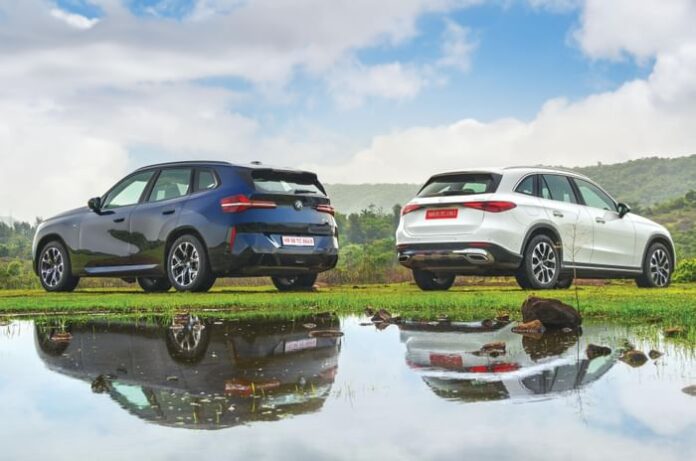Can the newer, bigger and radical-looking BMW X3 take on Merc’s popular GLC? We find out.
A Mercedes-Benz vs BMW is always an ‘El Clásico’. And it’s even more fierce when the rivalry is between their popular SUVs. The GLC has been Merc’s champion seller for long, and it now faces an all-new X3 that is bigger in size and, in typical BMW fashion, unapologetic when it comes to its character. Which one is the better choice? That’s what we will find out.
Mercedes GLC vs BMW X3 exterior design and engineering
X3 has a stronger road presence due to extra length and height.
The BMW in the all-new avatar is bigger than before. It is longer, wider and taller than the GLC and only falls short on wheelbase. Both get distinct design cues and stick to their roots, with the BMW featuring a moderately sized backlit kidney grille and sleek LED headlamps. Being an M Sport, the X3 also gets angular bumpers, and the overall face is more upright.
Where one flaunts a radical design, the other embraces traditional style.
The GLC, on the other hand, embraces curves and gets a healthy dose of chrome on the grille and pronounced power lines on the bonnet. Over to the side, the extra length, height and ground clearance give the BMW a stronger road presence. The boxy silhouette and upright roofline also give the X3 that prominent SUV look, while the tapering, almost coupé-like roof on the GLC is sleeker in comparison.
Both SUVs feature 19-inch wheels, with the BMW offering a sportier design. At the rear, the Bimmer continues with sharp lines and creases, while the GLC continues to flaunt curves. Both SUVs do style very differently, and it’s the same difference when it comes to the interiors as well.
| Mercedes GLC 300 4Matic vs BMW X3 xDrive 20 M Sport dimensions | ||
|---|---|---|
| Mercedes GLC | BMW X3 | |
| Length | 4716mm | 4755mm |
| Width | 1890mm | 1920mm |
| Height | 1640mm | 1660mm |
| Wheelbase | 2888mm | 2865mm |
| Boot capacity | 640 litres | 570 litres |
Mercedes GLC vs BMW X3 interior space and features
The GLC comes fitted with a portrait-styled touchscreen.
Inside the all-new X3, minimalism seems to be the theme. The dashboard design is sporty and contemporary, with a whole lot of recycled polyester used on the upper dash. The mesh-like material mimics carbon fibre visually, but the rough texture won’t appeal to everyone. Also, keeping the dust out of the pores will be a challenge, given our conditions.
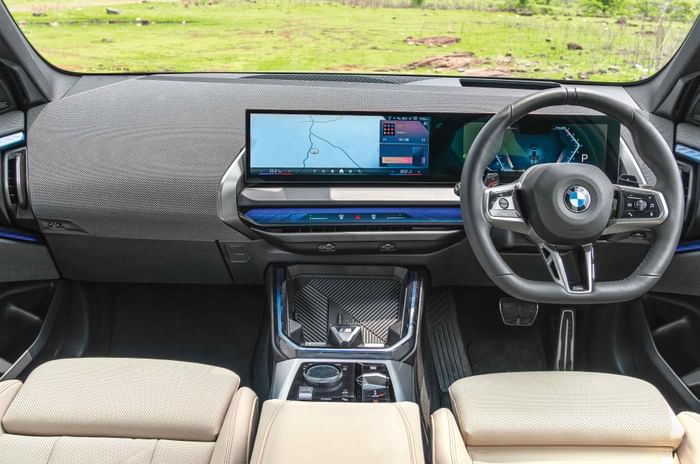 Open-pore recycled polyester dash upholstery looks sporty but not plush.
Open-pore recycled polyester dash upholstery looks sporty but not plush.
Like modern BMWs, the screen is embedded into a single-piece curved display along with the digital instrument cluster. What’s unique are the AC vents at each end that get a haptic touch control for the airflow but manual adjustments for the vent direction. It is complicated and feels over-engineered for something that needs to be easy to use. BMW has also ensured the cabin feels special in the dark, thanks to ambient lighting courtesy of the crystal elements that light up.
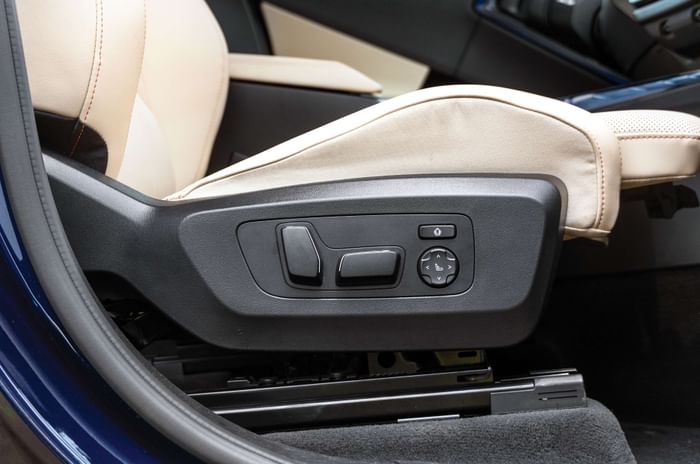 X3’s front seats get a lot more adjustment and better comfort.
X3’s front seats get a lot more adjustment and better comfort.
Comfort-wise, the front seats offer very good support and are better than the Merc’s. The additional under-thigh extension and side bolster adjustment give the seat an upper hand, along with the soft cushioning that is comfy for long drives.
Coming to the Merc, its interior follows a more traditional approach, which works in its favour as it feels more plush and expensive. The generous use of wood and metal throughout ups the visual as well as the touch and feel quotient, and between the two, the GLC has a more luxe appeal.
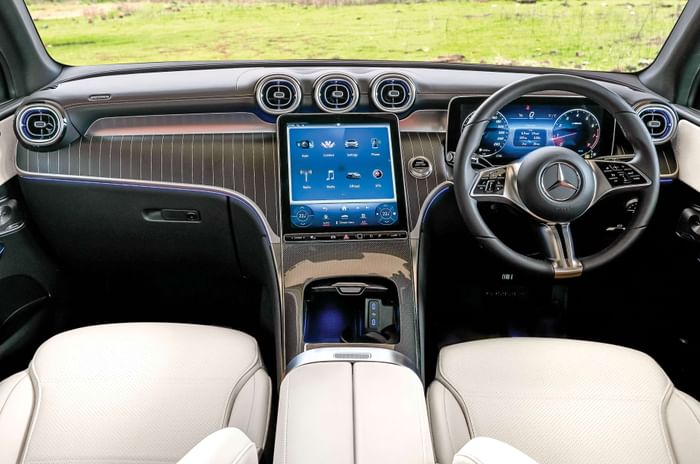 Traditional design and blend of wood and metal feel plush.
Traditional design and blend of wood and metal feel plush.
The 11.9-inch iPad-like screen is crisp and easy to use, and quality levels overall are higher. The seats, however, miss out on the extra support and aren’t as comfy as the X3. That said, you do get heating and ventilation as opposed to just the latter on the Bimmer.
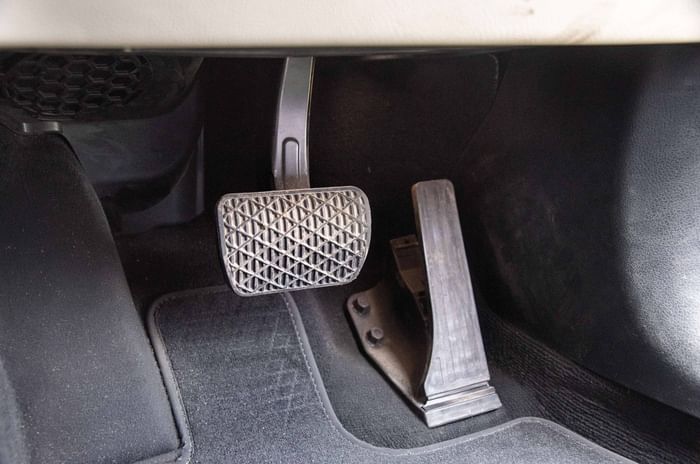 Narrow footwell in the GLC may be problematic for plus-10 sizers.
Narrow footwell in the GLC may be problematic for plus-10 sizers.
There are seat kinetics, too, which might not offer the full massage experience but do a good job of reducing fatigue over long periods. One irritant on the GLC is the snug footwell, more specifically, the short dead pedal. If you have a foot size over UK 10, you will struggle to rest your left foot, which, on a long drive, does get cumbersome.
Both miss out on a reclinable backrest.
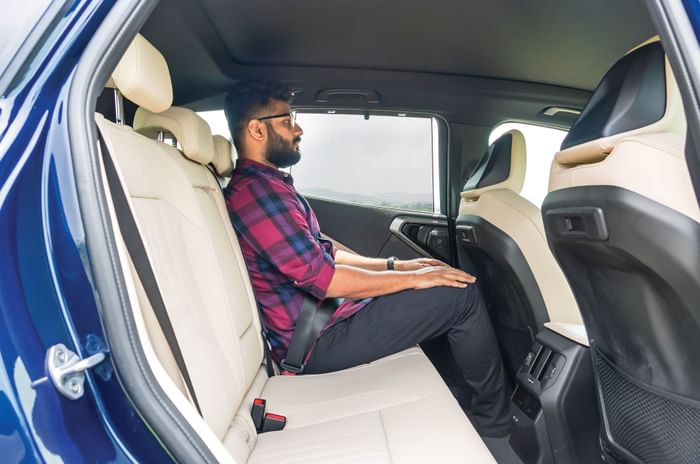 Not as spacious as the GLC in the rear but comfy enough and gets three-zone climate control.
Not as spacious as the GLC in the rear but comfy enough and gets three-zone climate control.
The latest-gen X3 has grown in size, but in this comparison, the wheelbase is shorter than the GLC. Still, there is ample kneeroom and width, and the upright roofline also allows for good headroom. The seat base is larger and, as a result, under-thigh support is better. The X3 has the more upright seating, and both SUVs miss out on a reclinable backrest.
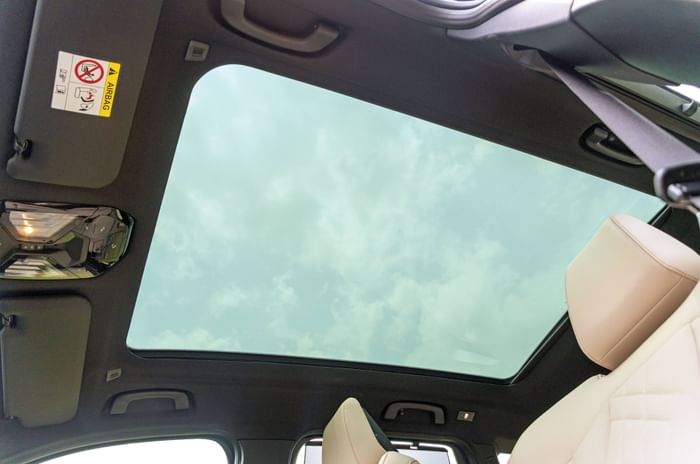 One-piece glass roof in the X3 adds drama.
One-piece glass roof in the X3 adds drama.
The centre passenger will also have to compromise thanks to a large centre tunnel on both SUVs. The windows are large and also get manual sunblinds, and the huge glass roof adds a tremendous sense of space.
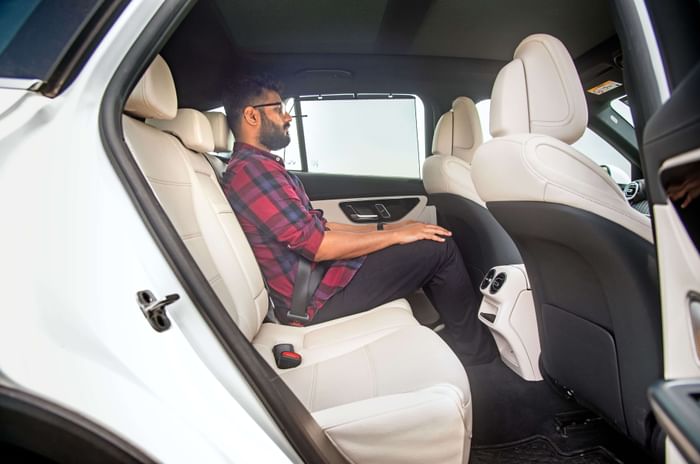 More kneeroom in the back of the GLC, but short seat base robs under-thigh support.
More kneeroom in the back of the GLC, but short seat base robs under-thigh support.
The Mercedes has a longer wheelbase, which means better space in the rear. What also helps are the scooped-out front seats that elevate some more kneeroom. The backrest, while also upright, is slightly better than the X3, but the short seat squabs don’t offer as much under-thigh support. The split-opening panoramic sunroof does not offer an unobstructed view of the sky but does a good job of airing out the cabin. Where the Merc wins is with the high-quality materials all around and a neat blend of wood and metal. The BMW’s textured panels look new-age but lack the plush feel.
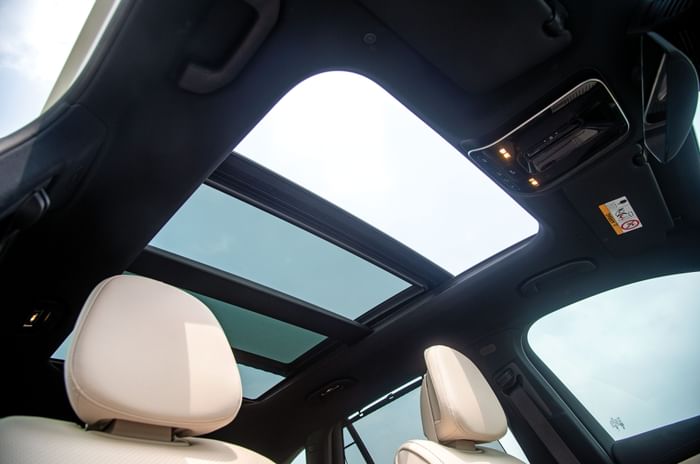 Split panoramic sunroof in the GLC can opened halfway for ventilation.
Split panoramic sunroof in the GLC can opened halfway for ventilation.
Boot space is also a Mercedes highlight, with 640 litres on offer compared to 570 litres on the X3, and both get a space-saver spare under the floor. Access to the boot, though, is better on the X3 thanks to a wider opening and lower floor.
Key controls baked into the SUVs’ central touchscreens.
Both SUVs rely heavily on their touchscreen infotainment for all major functions. Everything from HVAC to the car settings is embedded within the UI, with only a few haptic buttons for ease of use. Right off the bat, the MBUX in the GLC is extremely easy to use in comparison to the X3’s system. Basic functions like HVAC are hard-coded on the screen; the BMW, on the other hand, requires multiple touches, and the font size feels a tad small, so you inevitably end up hitting unnecessary functions while on the move.
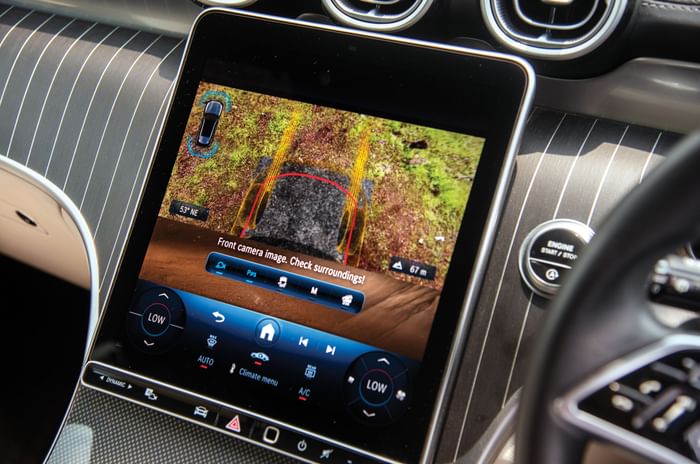 Merc’s transparent bonnet feature useful for parking, too.
Merc’s transparent bonnet feature useful for parking, too.
The GLC even gets an off-road mode, which works with the electronics and alters traction as needed, and there is also a transparent bonnet feature that will give you a view of what’s under the front of the car, stitched from the front camera feed. Both SUVs get park assist, but the X3 is a lot easier to use.
| Mercedes GLC 300 4Matic vs BMW X3 xDrive 20 M Sport features and safety kit | ||
|---|---|---|
| Feature | Mercedes GLC | BMW X3 |
| LED headlamps | Yes | Yes |
| Powered seats | Yes | Yes |
| Climate-control seats | Ventilated and heated | Ventilated |
| Massage seats | Seat kinetics | NA |
| Panoramic sunroof | Split-opening sunroof | Fixed glass roof |
| Electronic steering adjust | Yes | NA |
| Head-up display | Yes | Yes |
| Apple CarPlay/ Android Auto | Wireless | Wireless |
| Climate control | 2-zone | 3-zone |
| Rear backrest recline | NA | NA |
| Rear sunblinds | Yes | Yes |
| Electric tailgate | Yes | Yes |
| Spare wheel | Space-saver | Space-saver |
| Adaptive suspension | NA | Yes |
| ADAS | Yes | Yes |
| Off-road mode | Yes | NA |
| Airbags | 10 | 8 |
Mercedes GLC vs BMW X3 performance and refinement
GLC is relatively more powerful and faster to hit 100kph from rest.
| Mercedes GLC 300 4Matic vs BMW X3 xDrive 20 M Sport engine specs | ||
|---|---|---|
| Mercedes GLC | BMW X3 | |
| Engine | 4 cyl, 1999cc petrol | 4 cyl, 1998cc petrol |
| Power | 258hp (+23hp) at 5800rpm | 190hp (+18hp) at 4400-6500rpm |
| Torque | 258hp (+23hp) at 5800rpm | 310Nm (+200Nm) at 1500-4000rpm |
| Gearbox | 9-speed auto | 8-speed auto |
| Suspension (front) | Independent, MacPherson struts with coil springs | Independent, MacPherson struts with coil springs, adaptive dampers |
| Suspension (rear) | Independent, multi-link, anti-roll bar with coil springs | Independent, multi-link, anti-roll bar with coil springs and adaptive dampers |
For a good balance between performance and refinement, the petrol versions of these SUVs are the preferred choice. Both get a 2.0-litre turbo-petrol engine, but where the GLC, in its ‘300’ guise, makes 258hp, the X3 falls short with only 190hp. There is also a 90Nm difference in torque in the GLC’s favour, helping it when it comes to acceleration. The extra power and torque mean the GLC is faster to 100kph by almost 2 seconds. Both SUVs feature all-wheel-drive systems. More importantly, the in-gear timings are also much quicker in the GLC, which means overtaking is a lot more effortless.
.png)
2-litre turbo-petrol engines of the GLC (top) and X3 (bottom) push out 258hp and 190hp, respectively.
Both SUVs also get a 48V battery that provides an additional boost under acceleration and Sport modes to amplify powertrain responses, with the X3 getting a ‘Boost’ mode, too, which offers a 10-second acceleration boost while you hold the paddle.
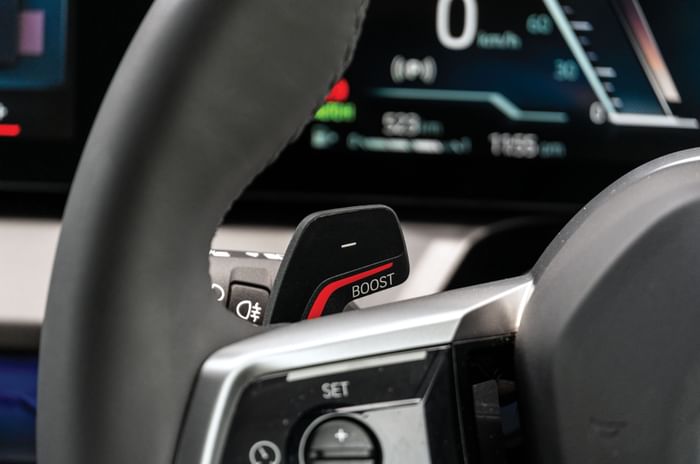 Boost mode offers 10 secs of rapid acceleration.
Boost mode offers 10 secs of rapid acceleration.
There’s also an ‘Individual’ mode, where you can customise the engine response and the steering weight and have the most optimum setting to your liking – a straightforward setup in the Merc, but in the X3, it requires digging into Sport mode and then customising it further. However, the one ace up the X3’s sleeve is the adaptive dampers for the suspension.
| Mercedes GLC 300 4Matic vs BMW X3 xDrive 20 M Sport performance | ||
|---|---|---|
| Acceleration | Mercedes GLC (in seconds) | BMW X3 (in seconds) |
| 0-20kph | 0.83 | 0.98 |
| 0-40kph | 1.78 | 2.29 |
| 0-60kph | 3.16 | 3.86 |
| 0-80kph | 4.82 | 5.94 |
| 0-100kph | 6.96 | 8.68 |
| 0-120kph | 9.68 | 12.03 |
| 20-80kph | 4.2 | 5.67 |
| 40-100kph | 4.88 | 6.79 |
Mercedes GLC vs BMW X3 ride comfort and handling
X3’s firmer suspension setup lends it a composed ride, especially in corners.
![]() Adaptive dampers result in good ride and flat cornering.
Adaptive dampers result in good ride and flat cornering.
Both SUVs aim for an even balance between performance and comfort, with the latter taking slightly more priority. The GLC gets a passive suspension, which is tuned for a soft setup. As a result, the Merc rides better over bad roads, and there is less movement at low speeds. The X3 is on the firmer side, and even after you switch the mode to comfort, it isn’t as softly sprung as the GLC. Once the pace is upped, though, the X3 comes into its own, with a flat and composed ride that is amplified in the corners.
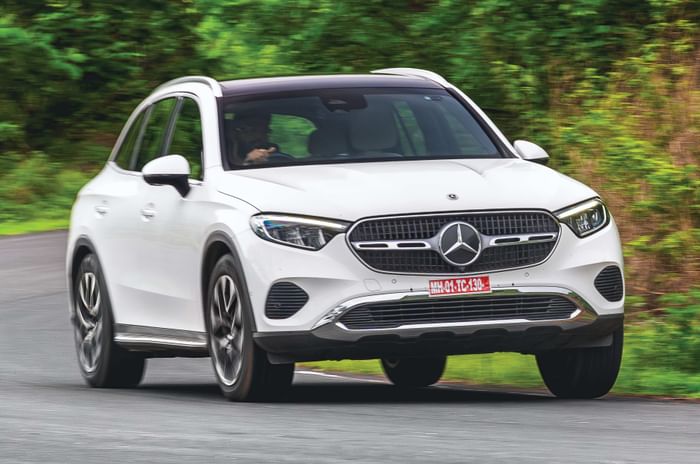 Not as sharp to handle as the X3 but still holds its own very well.
Not as sharp to handle as the X3 but still holds its own very well.
The GLC is not bad either, but the extra stiffness in Sport mode gives the X3 an edge. Body roll in both SUVs is negligible, but here, too, the X3 shines with its steering setup and adaptive dampers. If you are a keen driver and value handling, the X3 will offer more for you.
Mercedes GLC vs BMW X3 price and verdict
They are just Rs 50,000 apart in price.
Priced at Rs 75.30 lakh, the GLC is marginally cheaper than the Rs 75.80 lakh X3. So, their prices are pretty much identical. The two are also very close in every other aspect. The X3, with its larger proportions and contemporary design, has more presence, but the Merc’s soft-around-the-edges look is also favoured by many. The BMW’s interior looks sporty, but it’s the Merc that edges ahead in our books, with a more opulent feel and a lot of high-quality materials used throughout. The Merc has more space, but in terms of seating comfort, it’s the BMW that has an advantage.
![]() The GLC’s extra horses make it the better-driving of the two.
The GLC’s extra horses make it the better-driving of the two.
On the move, the GLC’s softer setup gives it the plusher ride. Handling, though, goes to the BMW, with its sharper manners around bends, but it’s the Merc that is more exciting with the many extra horses. So, with its elegant styling, plusher interior, good ride and a stronger engine, the GLC offers more of what typical buyers look for in this segment, and it takes the win.
Also see:
Skoda Kylaq vs Mahindra XUV 3XO comparison
BYD Sealion 7 vs Hyundai Ioniq 5 vs BMW iX1 LWB comparison
Tata Punch CNG vs Hyundai Exter CNG: Dual duel
